How Cathedral City Senior Center went from excluding Spanish speakers to embracing them
This article was produced as a project for the USC Annenberg Center for Health Journalism’s 2022 California Fellowship.

Cathedral City Senior Center outreach coordinator Laura Gutierrez, left, looks for information to hand out in Cathedral City, Calif., on Thursday, May 12, 2022. Gutierrez aims to spread the word about the senior center's new activities by leaving printouts of their calendar of events at his business.
Taya Gray/The Desert Sun
Rufina Acosta has been attending St. Louis Catholic Church ever since moving to Cathedral City from Mexico 18 years ago. The church, which offers mass in English and Spanish, shares a parking lot with the Cathedral City Senior Center, but Acosta had never been inside. Neither had any of her friends at church.
Not until Laura Gutierrez invited them.
Gutierrez is one of the newest additions to the Cathedral City Senior Center. She was hired last year as the center’s part-time community outreach coordinator. Her mission: serve the city’s Spanish-speaking seniors by bringing them into the center and connecting them with resources.
Gutierrez met Acosta outside the church last fall.
“She was there when it was cold, when it was not cold, inviting us,” Acosta said (in Spanish). “There wasn’t anyone there giving us an invitation before her.”
For years in the western Coachella Valley, residents like Acosta, who don’t speak English, have been left out of senior centers — the same places where many older adults go when experiencing isolation, loneliness, and housing, food or income insecurity. The centers are lifelines.
In Cathedral City, one of the poorest cities in the valley and where the majority of the population identifies as Hispanic, an entire segment of the population was effectively cut off from those resources.
A lack of outreach to Spanish-speaking seniors meant many simply didn't know their local senior centers existed, according to local leaders.
But that’s changing.
To help address the disparities, the Cathedral City Senior Center launched the “Edmundo & Herlinda Carrillo Equity in Aging Initiative,” which is named after the relatives of anonymous local private donors. The initiative is intended to target outreach to more diverse seniors, including Spanish speakers. That first large donation made hiring Guiterrez possible — and recurring donations have made her position permanent.
But that was just the first step.
Cathedral City Senior Center outreach coordinator Laura Gutierrez, left, talks to Luna's Hair Salon owner Jose Alfredo Xicay inside his salon in Cathedral City, Calif., on Thursday, May 12, 2022. Gutierrez aims to spread the word about the Senior Center's new activities. Taya Gray/The Desert Sun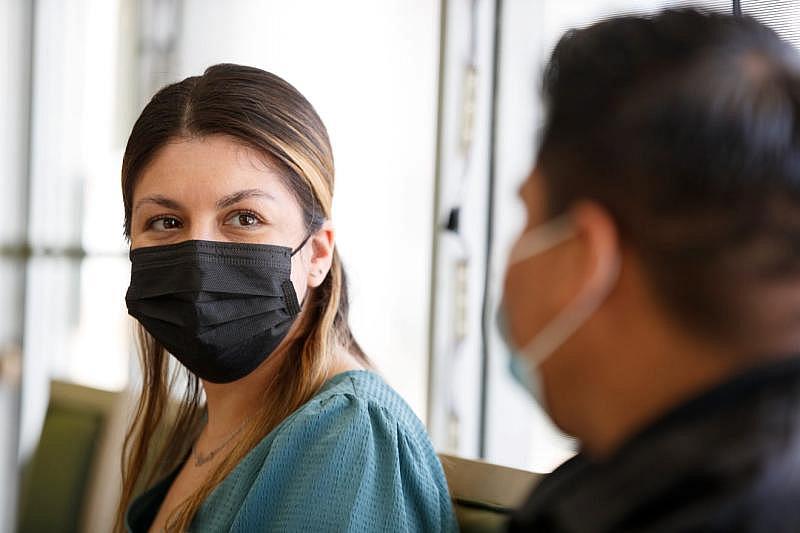
‘It’s just glaring’
What makes the senior center special is the feeling of familiarity and friendliness shared among its members, according to Geoff Corbin, executive director and CEO of the senior center. “It’s being greeted by your name at the front door,” he said.
“Well, if you’re Spanish speaking, good luck with that,” Corbin said earlier this year.
Corbin, who has been running the center for the last three years, said he doesn’t know how the center’s membership became so out of line with the demographics of the city – 60% of residents identified as Hispanic or Latino in the 2020 Census.
“It took me a week of being here to be like ‘Huh? What’s wrong with this picture?’” Corbin said. “The senior center doesn’t currently reflect all of Cathedral City.”
At the time, no programs were bilingual or in Spanish. Flyers were printed in English only. Email marketing and social media posts were English only. Most of the staff, volunteers and board of directors spoke English only.
“It’s just glaring,” admitted Corbin.
Translating the center’s signage was one of Gutierrez’s first projects at the center. Mostly, however, she spent her days in and out of churches, Mexican bakeries, hair salons, community centers and senior communities, introducing herself and passing out flyers. She showed up to the same places week after week, trying to earn the trust of the community.
Volunteer Jeff Bergen helps a client at the Cathedral City Senior Center food bank in Cathedral City, Calif., Monday, April 25, 2022. Andy Abeyta/The Desert Sun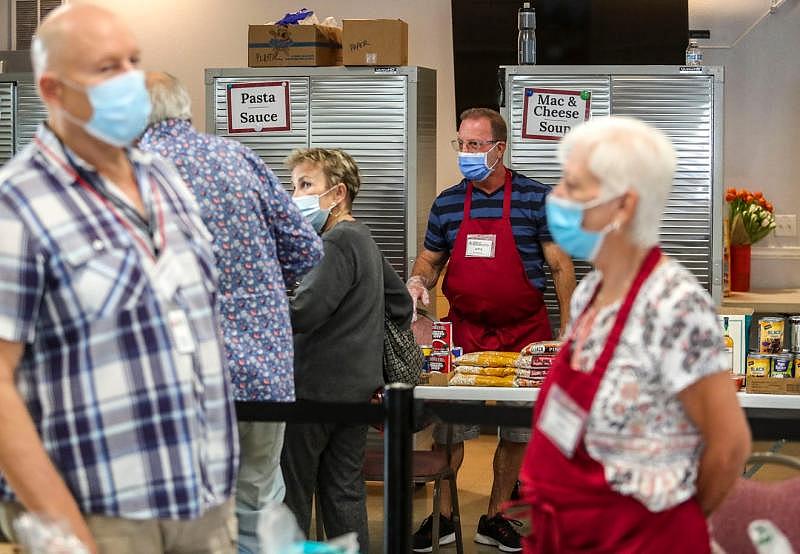
Word was getting around. People from across the Coachella Valley called her for help with housing, food, even translating or reading their mail to them. Gutierrez always tried to answer their calls, whether or not she was at work.
“I like to help right away,” she said. “I’m everywhere.”
For many, it was the first time they were informed about benefits they may be entitled to. And the first time they had heard of the senior center.
By January, Padre Luis Aguido from the church next door started teaching a painting class at the center and a regular group of Spanish speakers started to show up. By April, Spanish and bilingual programming expanded to include virtual lectures and basket making. Now, there’s an “English for Spanish Speakers” class every Thursday and “Spanish for English Speakers” every Wednesday; and TODEC, a nonprofit organization supporting the Inland Empire’s immigrant community, comes regularly to the center to help people with immigration and other issues.
But it hasn’t been a smooth transition.
"We get all sorts of mild pushback," Corbin said in April. Some wondered whether or not the Hispanic community even wanted to come to the senior center or why any programs were being held in Spanish.
Luna's Hair Salon owner Jose Alfredo Xicay holds a calendar of events for the Cathedral City Senior Center inside his salon in Cathedral City, Calif., on Thursday, May 12, 2022. Taya Gray/The Desert Sun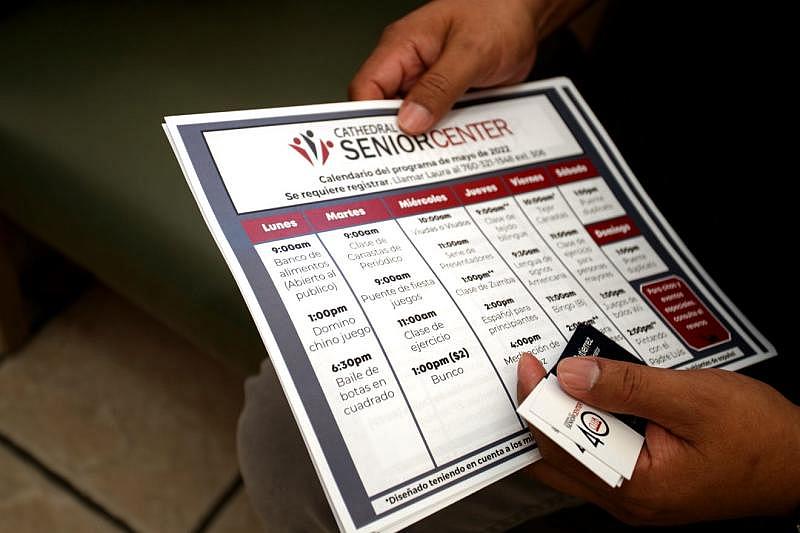
Others were concerned that the Spanish speakers would slow fast-paced activities like bingo and bunco down. According to Corbin and Vice President of Operations Victor Ide, the answer may be that those activities are intentionally slowed down in order to make them more inclusive.
When the painting class first began, three women showed up for the class only to be turned away. The volunteer at the front desk didn’t know how to communicate with them and, evidently, hadn’t been informed of the center’s latest initiative.
Gutierrez was able to convince the women to give the center another try, Corbin said.
“Can you imagine coming when Laura’s not there?” Corbin said in September. “Usually we can find someone but, when we can’t, that’s not very welcoming.”
Maria Munos, one of the seniors brought in through Gutierrez’s efforts, worries what will happen when the coordinator isn’t able to be at the center.
“How are we going to start a conversation when nobody speaks Spanish here?” Munos said (in Spanish). “It’s hard for one person to be doing the outreach,” she added.
Cathedral City Senior Center outreach coordinator Laura Gutierrez, left, talks to Luna's Hair Salon owner Jose Alfredo Xicay inside his salon in Cathedral City, Calif., on Thursday, May 12, 2022. Gutierrez aims to spread the word about the senior center's new activities and draw in more seniors that might otherwise be lacking socialization and resources. Taya Gray/The Desert Sun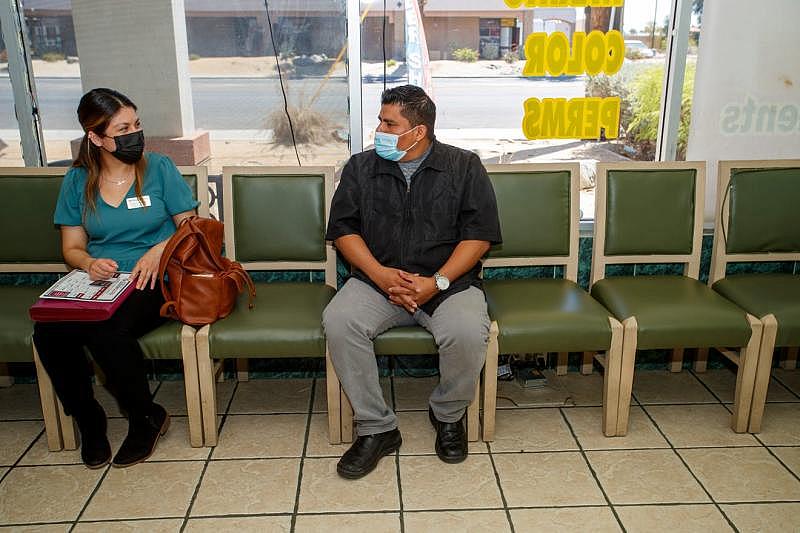
On-the-ground work
When she was just six months into the job, Gutierrez was already starting to feel burned out.
Not only was Gutierrez doing her regular outreach throughout the city, she was also translating as needed for other senior services providers, attending and assisting with all the Spanish-language programming, and helping out with the weekly food bank.
At the same time, she was living in Yucca Valley, renting a $400-per-month bedroom, finishing up a medical assistant program and commuting to Cathedral City every morning.
“It’s too much for me, myself,” she said in mid-February.
The long commute and low pay — just barely above minimum wage — sometimes made her want to give up, but she felt committed to the seniors she had met.
Instead, she moved closer, sharing an apartment with her sister in Palm Springs so they could split the rent, and taking classes online. Finally, this summer, Gutierrez was hired full-time. She got a raise and more time to spend on outreach.
Now, she said, she doesn’t feel as much pressure on herself or her budget. Despite the increase in work hours, Gutierrez actually has more time to cook and eat meals, and focus on homework.
“I’m so happy,” she said. “I actually love what I’m doing right now — helping my community.”
When her seniors come into the center, she greets them with a smile and hug. She asks about their day, their families, the projects they’re working on. The seniors, much like herself, try to appear positive even when things aren’t going well or they’re feeling overwhelmed.
With time, she said, some of the seniors have started to talk to her about their concerns, including medical and family issues.
“I’m lucky to have this privilege,” she said. “They feel very comfortable with me.”
Getting to know the community has helped Gutierrez think of new ways the senior center can help. For example, when she realized some of the seniors were showing signs of stress, she helped start a free depression support group with nonprofit Vision Y Compromiso, now held every Friday.
Luna's Hair Salon owner Jose Alfredo Xicay listens to Cathedral City Senior Center outreach coordinator Laura Gutierrez inside his salon in Cathedral City, Calif., on Thursday, May 12, 2022. Gutierrez aims to spread the word about the senior center's new activities by leaving printouts of their calendar of events at his business. Taya Gray/The Desert Sun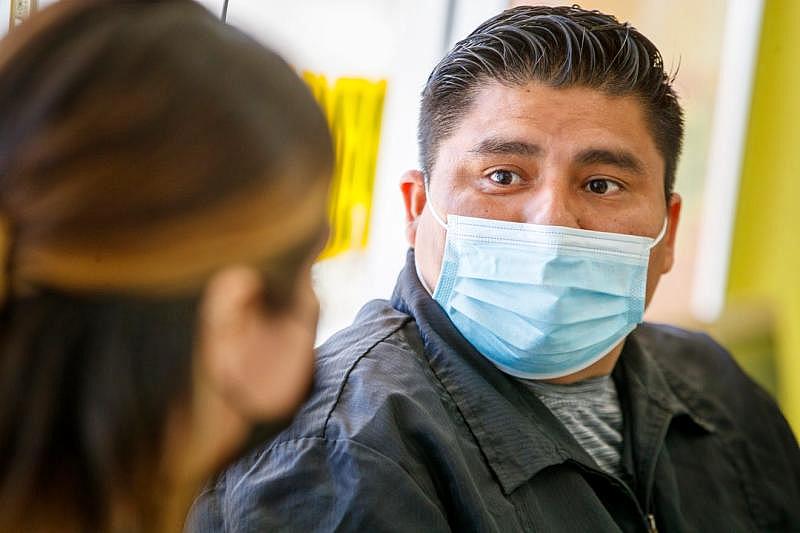
The greatest need
Across the Coachella Valley about 15,000, or 15%, of Coachella Valley seniors lived in poverty prior to the pandemic, according to the 2018 Special Report on Senior Health in the Coachella Valley conducted by Health Assessment and Research for Communities (HARC) in Palm Desert. More than 7,300 seniors said they had to skip meals or cut the size of meals because they didn't have enough money for food, according to the report.
More than 20% of seniors had been diagnosed with one or more mental health disorders with depression being the most common. HARC found that over 3,600 seniors had seriously considered suicide in the previous year.
Between 2016 and 2020, more than 18% of Cathedral City’s population lived in poverty, according to the U.S. Census Bureau.
Food items are packed into emergency bags for anyone in need at the Cathedral City Senior Center in Cathedral City, Calif., Monday, April 25, 2022. Andy Abeyta/The Desert Sun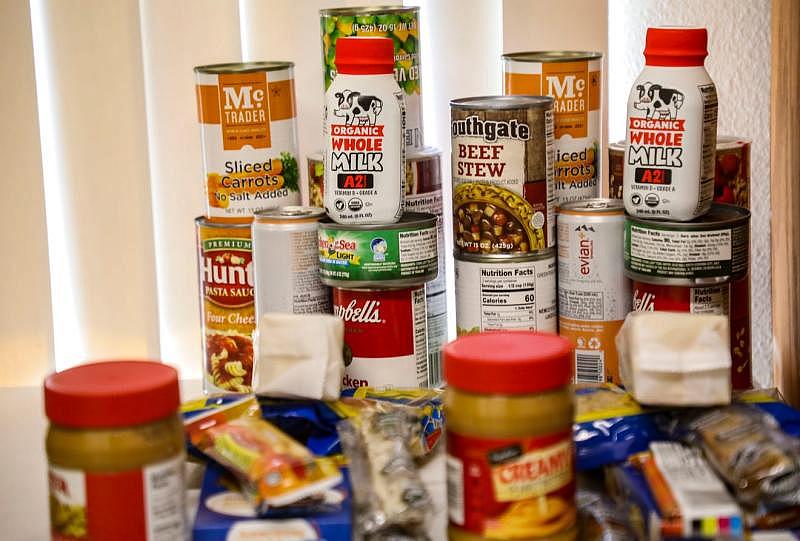
“Forty percent of our residents live in low-income census tracts,” Corbin said.
The pandemic, its restrictions and related uncertainty only added to these problems.
Acosta, who is usually very social, felt lonely during the first year of the pandemic when even St. Louis Catholic Church was closed. Though her family lives nearby, she said, she still missed all her volunteer work and activities. She now leads the crocheting class at the senior center.
“It's a good distraction,” Acosta said. “It’s a distraction from what was lost. Some of us have lost family members — we have them in our heart.”
“That’s why I like crocheting and doing this so I can forget a little bit what we lived and what we’re living,” Acosta said. “I expect the group to grow because there’s a lot of people that feel alone in their homes and if they know this group exists, they will come to be together.”
Acosta and other recent members are helping Gutierrez spread the word about what the center has to offer, but there are still thousands more residents to reach in the city of more than 54,000 people across nearly 23 square miles.
The senior center recently hired one additional Spanish speaker, Fatima Castellanos, in the newly created position of development and marketing specialist. Castellanos, Gutierrez, Ide, Corbin and Tracie Alexander, the director of programming, are the only full-time staff at the center. Pat Graves works part-time as the volunteer coordinator.
The center gets additional help through its partnership with Mizell's case management program.
The Mizell Center in Palm Springs has three levels of Spanish classes — Beginner A, Beginner B, and Intermediate — and a Spanish discussion group, all geared toward non-native speakers. Mizell prints its meal program menus each month in English and Spanish.
The Joslyn Center, a center in Palm Desert that provides "programs and services for older adults," doesn't have any programs in Spanish.
Corbin plans to hire additional staff, especially bilingual Spanish speakers, to help Gutierrez with the initiative and support the center as it grows. However, he said, funding remains a problem.
Community outreach coordinator Laura Gutierrez talks with a volunteer at the Cathedral City Senior Center food bank in Cathedral City, Calif., Monday, April 25, 2022. Andy Abeyta/The Desert Sun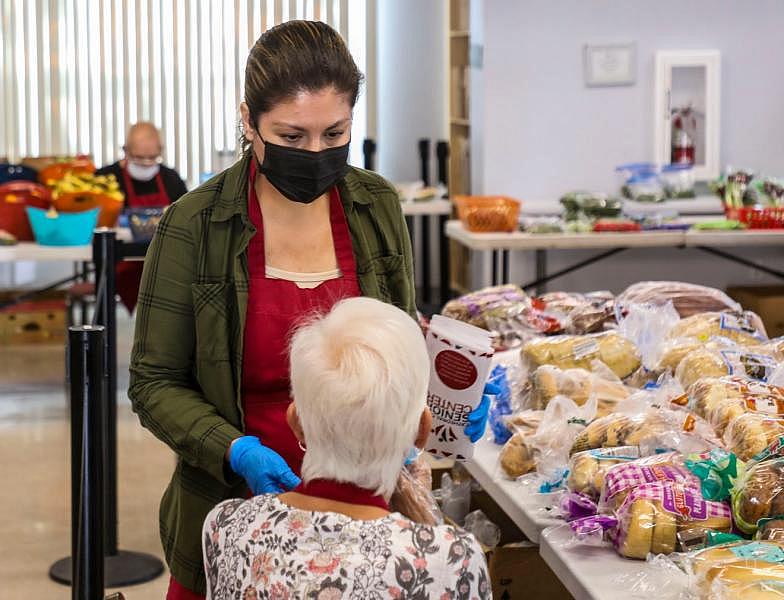
Finding the money
The Cathedral City Senior Center receives significantly less funding than other area senior centers and, despite its name, is not operated by the city government. One of the reasons for this is due to when the city itself incorporated: 1981 — three years after Californians voted for Proposition 13.
Property tax revenue is now dependent on the AB 8 system. Its intention was to allow the state to allocate property tax revenue to local governments according to the proportion of property taxes it had already been collecting, lessening the blow caused by Prop. 13, according to officials in Cathedral City. Cities that incorporated after 1978, however, weren’t providing services or collecting taxes yet so were left out. Post-Prop. 13 cities, including Cathedral City, on average, receive 60% less in property tax revenue than pre-Prop. 13 cites, according to the city.
The total budget for the Cathedral City Senior center in fiscal 2019-2020 was about $224,000. By comparison, the Joslyn Center in Palm Desert received $339,601 from the Cove Communities Service Commission — which includes the cities of Palm Desert, Rancho Mirage and Indian Wells — for fiscal 2020-21, according to financial statements. Both Joslyn and Mizell also have more large donors.
“We’re actually larger than Palm Springs and Palm Desert, yet their senior centers have multi-million-dollar-a-year budgets,” Corbin said. “And our folks have more need,” he said.
Now, though, the budget for the Cathedral City Senior Center is $850,000 and, Corbin said, quickly on its way to $1 million.
Earlier this year, the senior center received a van (funded by The Hall of Flowers and Palm Springs Motors) so they could start a shuttle service for seniors who don’t have reliable access to transportation. The van will also be used to deliver meals to those who are homebound and for recreational day trips.
Apples and other fruits are seen available for clients at the Cathedral City Senior Center food bank in Cathedral City, Calif., Monday, April 25, 2022. Andy Abeyta/The Desert Sun
The center has received grants from the Inland Empire Community Foundation and the Berger Foundation. It's also benefited from several large donations, including several hundred thousand dollars in private donations specifically for the language initiative.
Thanks to CARES Act funding, the senior center was receiving an additional $130,000 from the city during the first two years of the pandemic. Since June, though, the center is only receiving $50,000 from the city — the same amount budgeted since before the pandemic.
“That’s a major setback for us,” Corbin said. And, even with larger donations coming in, Corbin said, “The program is still costing us more than we’re raising.”
As of spring 2022, the center had about 300 active paying members — about half the number it had prior to the pandemic. Another 600 members are on scholarship, Corbin said in September.
"We've changed the way we review memberships — we don't turn anyone away," Corbin said. "We have far surpassed pre-pandemic rates."
In 2021, just over half of the center’s members lived in Cathedral City, according to Corbin, who said 18% of members lived in Palm Springs, which is also serviced by the Mizell Center, and 48% lived in Rancho Mirage and Palm Desert.
Like other local senior centers, the Cathedral City Senior Center’s membership includes those who are blind or visually impaired, hearing impaired, or living with some other disability. Last year, 15% were older than 85, 80% were over 70, and 20% of them reported living alone.
Corbin said Cathedral City residents face more language, financial, health, nutrition, and transportation challenges than any other city in the west valley.
“Only Indio (in the east valley) is bigger than Cathedral City, and only Indio has more Hispanic folks living there,” Corbin said. The Indio Senior Center is city-funded and city-operated. It is also 16 miles from the Cathedral City Senior Center.
Argelia Jimenez, the community program administrator in Indio, is bilingual and, because she doesn’t need to fundraise, is able to focus on the needs of the seniors.
The Cathedral City Senior Center is mostly staffed by volunteers — and there’s a great need for bilingual volunteers to help at the reception desk, the food bank and to drive the center’s new shuttle.
Corbin’s goal is to reach more than 40% parity by 2024 — that means getting more diverse representation among the senior center’s membership, volunteers, staff, board, instructors and donors. He plans to have an equal number of programs in Spanish and English by 2024.
“Now more than a third of our programming is Spanish speaking or bilingual,” Corbin said. “My goal is that we’re bilingual across the board.”
Maria Sestito is a freelance writer and previously was a Report for America journalist covering senior issues for The Desert Sun. This article was produced as a project for the USC Annenberg Center for Health Journalism’s 2022 California Fellowship. For more on Maria, follow her on Twitter at @RiaSestito or Instagram at @riasestito_reporter.
[This article was originally published by Desert Sun.]

